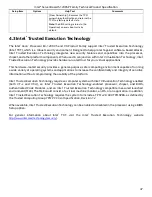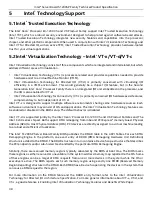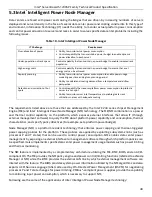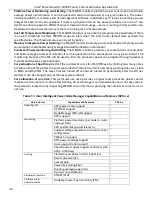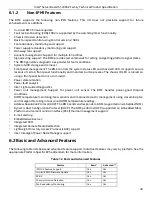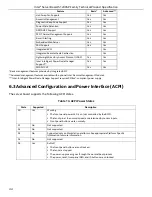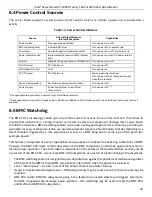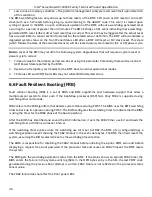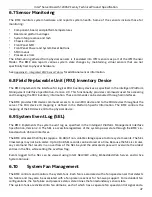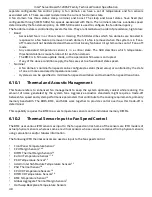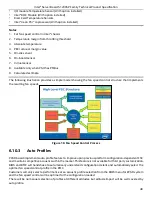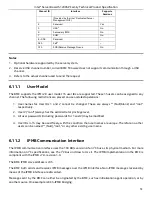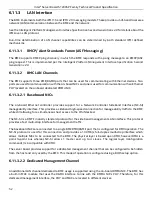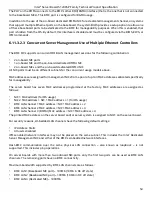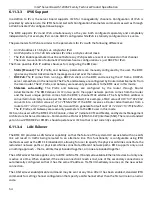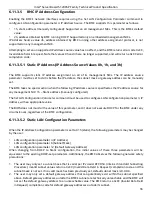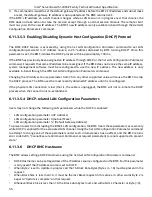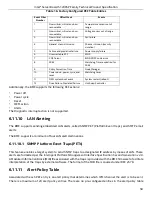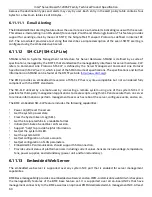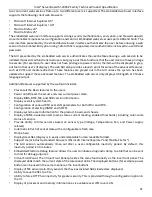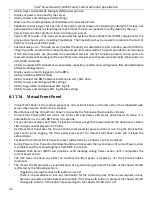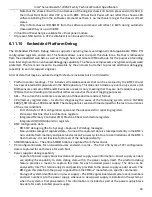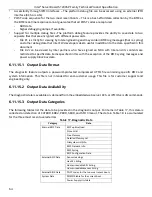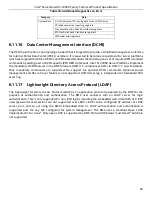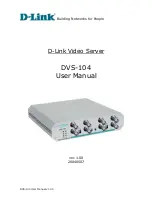
Intel® Server Board S1200SP Family Technical Product Specification
50
Users can still choose performance or acoustic profile in BIOS setting. Default is acoustic. Performance option
is recommended if customer installs M.2 SSD or any other PCI-e add-in cards which requires excessive cooling,
e.g., boundary condition of 55C and 300LFM.
To support PCI-e add-in cards:
•
Acoustic option is targeted to meet boundary condition of 55C&200LFM.
•
Performance option is targeted to meet boundary condition beyond 55C&200LFM. e.g., boundary
condition of 55C and 300LFM.
6.10.4
Memory Thermal Throttling
The system shall support thermal management through static closed loop throttling (Static-CLTT) of system
memory based on the platform as well as availability of valid temperature sensors on the installed memory
DIMMs. Throttling levels are changed dynamically to cap throttling based on memory and system thermal
conditions as determined by the system and DIMM power and thermal parameters. Support for CLTT on
mixed-mode DIMM populations (that is, some installed DIMMs have valid temp sensors and some do not) is
not supported. The BMC fan speed control functionality is related to the memory throttling mechanism used.
The following terminology is used for the various memory throttling options:
•
Static Closed Loop Thermal Throttling (Static-CLTT): CLTT control registers are configured by BIOS MRC
during POST. The memory throttling is run as a closed-loop system with the DIMM temperature sensors
as the control input. Otherwise, the system does not change any of the throttling control registers in the
embedded memory controller during runtime.
•
Intel® Server Systems supporting the Intel® Xeon® processor E3-1200 V5 and V6 product family introduce
a new type of CLTT which is referred to as Hybrid CLTT for which the Integrated Memory Controller
estimates the DRAM temperature in between actual reads of the TSODs. Hybrid CLTTT shall be used on
all Intel® Server Systems supporting the Intel® Xeon® processor E3-1200 V5 and V6 product family that
have DIMMs with thermal sensors. Therefore, the terms Dynamic-CLTT and Static-CLTT are really referring
to this ‘hybrid’ mode. Note that if the IMC’s polling of the TSODs is interrupted, the temperature readings
that the BMC gets from the IMC shall be these estimated values.
6.11
Messaging Interfaces
The BMC supports the following communications interfaces:
•
Host SMS interface by means of low pin count (LPC)/keyboard controller style (KCS) interface
•
Host SMM interface by means of low pin count (LPC)/keyboard controller style (KCS) interface
•
Intelligent Platform Management Bus (IPMB) I2C interface
•
LAN interface using the IPMI-over-LAN protocols
Every messaging interface is assigned an IPMI channel ID by IPMI 2.0. The following table shows the standard
channel assignments.
Table 15. Messaging Interfaces
Channel ID
Interface
Supports
Sessions
0
Primary IPMB
No
1
LAN 1
Yes
2
LAN 2
Yes
3
LAN3
1
Yes
Summary of Contents for S1200SPL
Page 3: ......


